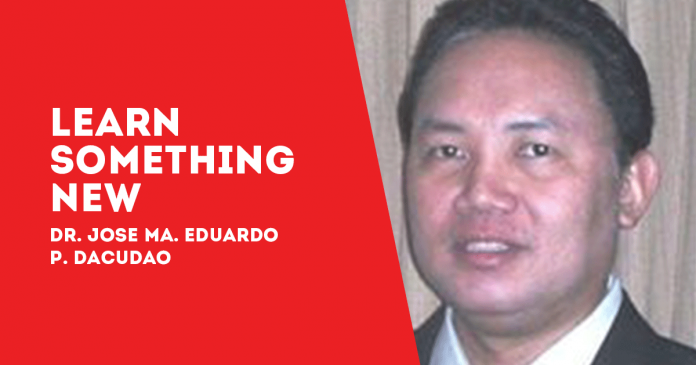
BY DR. JOSE PALU-AY DACUDAO
WE HAVE to acknowledge that the makers of a Constitution are human and humans have made and could make mistakes, such as creating an impossible-to-fulfill legal provision.
Faced with such reality, the only real honest and fair solution is to acknowledge such fact, instead of wasting millions trying to create such an impossible artificial language. These millions of pesos wasted on ‘Filipino’ subjects, literature, and media industries come from the taxes of all Filipinos, including non-Tagalogs, yet these taxes are being used in endeavors that favor only Tagalog and that culturally harm the other languages.
Furthermore, almost all of these subjects in Tagalog are useless in the sense that they do not make students learned in the sciences, social sciences, and math, the subjects that really matter for learned and well-educated people. What they really do is to turn non-Tagalogs into Tagalogs, the Republic of the Philippines into the Republic of the Tagalog.
Additionally, in practical terms, these several subjects in Tagalog overloads teachers. Many teachers have complained of the MLE program because it overloads them, but it is these useless subjects in Tagalog that really overloads them.
The solution would be to scrap these several useless Tagalog subjects, and substitute two or three Philippine language courses. This would lessen the loads of teachers and teach the next generations of Philippine citizens respect for, and pride and delight in the naturally diverse multi-ethnolinguistic Philippines.
One obvious recommendation of this essay is for laws, executive orders, and even a Constitutional Amendment that would clearly mandate a Multiple Official Languages model in the Philippines, in the spirit of respecting and preserving our traditional indigenous languages and the ethno-linguistic peoples that they define. That means teaching multiple languages in all of the Philippine’s regions, including the regional lingua franca and local languages in their indigenous areas.
This is a must for fast-dying languages such as Kapampangan which will surely die out in the next few generations if not taught in Pampanga and southern Tarlac elementary and high schools. Ditto for the Palawan languages, Romblon languages, Ibanag, Pangasinense, and other minority Northern Luzon languages, Bicolano in Camarines Norte, Manobo and other minority Mindanao languages.
The above also means that in traditional Tagalog areas, aside from Tagalog subjects, at least two other Philippine languages shall be made available for teaching by the school, with the students allowed to choose at least two among them. For example, an elementary and high school in Manila shall be given syllabuses on Ilocano, Kapampangan, Bicolano, Hiligaynon, Cebuano, and Waray.
In order to prevent an actual or potential Tagalista centralized body, which will not have the best interests of peripheral ethnolinguistic people in mind, from meddling and possibly sabotaging such efforts, these syllabuses and subjects shall be created by indigenous people based in the provinces. The school shall make subjects on these languages available based on the syllabuses. A student is required to choose at least two of these subjects. Thus, a child from Manila will grow up learning not only Tagalog but also two other non-Tagalog Philippine languages. In Cebuano areas, that means teaching at least two other Philippine languages, such as Hiligaynon and Tagalog. And so on.
Thus, we shall usher in a wonderland diverse of varied ethnolinguistic peoples respectfully and happily relating to one another harmoniously. (To be continued)/PN



